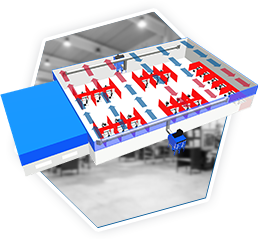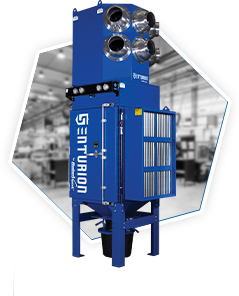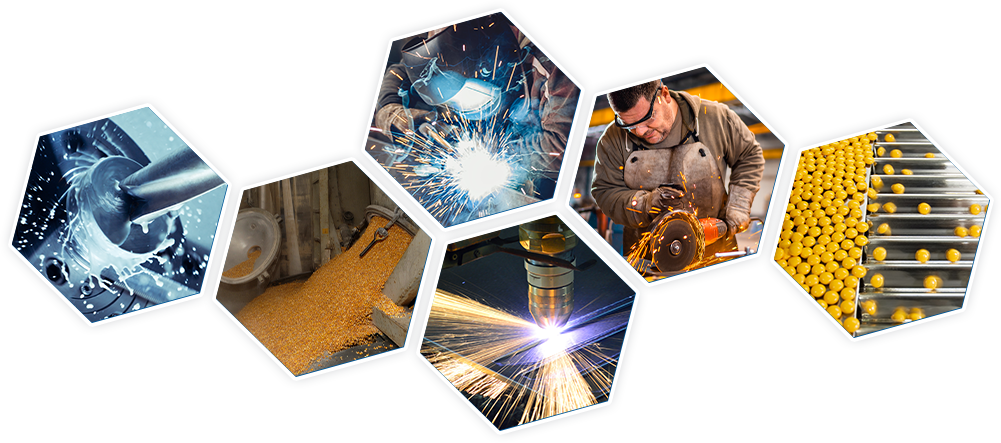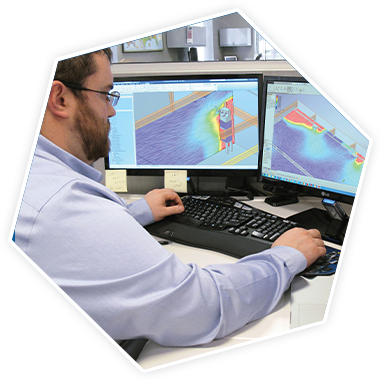Complete Guide to Ambient Fume Extraction
Complete Guide to Ambient Fume Extraction
In industrial environments, maintaining clean air is essential for the health and safety of workers and the efficiency of operations. Ambient fume extraction systems play a pivotal role in achieving this by continuously filtering and removing airborne contaminants throughout the entire workspace. Ambient air filtration systems offer a viable alternative to traditional source capture methods, particularly in scenarios where conventional solutions are impractical. By focusing on ambient air collection and controlled airflow management, these systems contribute to enhanced worker safety and improved indoor air quality in industrial settings. This guide to ambient fume extraction systems explores their benefits, applications and key considerations in designing and maintaining an effective system, ensuring a healthier and more productive workplace.
Need help with ambient fume extraction system design?
What is Ambient Fume Extraction?
- General Air Cleaning: Unlike source capture systems that capture contaminants right as they are produced, ambient systems treat the air in a broader area, often encompassing an entire room or building.
- Air Filtration Units: These systems typically utilize large dust collectors or filtration units that cycle air through filters to remove contaminants. The filtered air is then recirculated back into the room.
- Maintenance of Air Quality: Ambient air filtration systems are used to maintain a consistent level of air quality, reducing overall concentrations of harmful particulates and gases.
Ambient Air Filtration Configurations
The two most prevalent ambient air filtration configurations are the ducted and ductless varieties. In either case, they are designed to clean air throughout the facility. The configuration can be a single ambient filtration unit that is connected to a series of ducts or multiple units that are configured to circulate air in a pattern that provides the desired filtration/contaminant removal efficacy. There are two basic configurations to consider.

- Ducted Push-Pull Systems: A ducted push-pull system is a type of air filtration system that is designed to handle large volumes of air and is commonly used in industrial environments where effective management of airborne contaminants is crucial. The "push" part of the system introduces clean, filtered air into the environment, while the "pull" part sucks the contaminated air out, capturing it through filtration before it's recirculated or expelled. This creates a continuous flow of air across the workspace, effectively capturing pollutants (like dust, fumes, and vapors) and maintaining a clean air environment. These systems require ductwork to channel air to and from the workspace, making them more complex and often more expensive to install and maintain.

- Ductless Ambient Systems: Ductless systems, on the other hand, do not require extensive ductwork. These are standalone units that filter and recirculate air back into the same environment. Air is drawn into the unit, filtered through one or more stages, and then expelled back into the room. Ductless systems are generally easier to install and more flexible in terms of placement, as they do not need to be integrated into a building's ductwork. However, they might not be as effective for larger or more contaminated areas since each unit only covers a specific area.
Considerations in Ambient System Design
 Is an ambient filtration system the best choice for every facility? In some situations, the answer is no. In cases where a high concentration of highly toxic pollutants is produced, such as high-production welding or heavy powder & bulk applications, source capture is usually recommended as the primary dust control solution.
Is an ambient filtration system the best choice for every facility? In some situations, the answer is no. In cases where a high concentration of highly toxic pollutants is produced, such as high-production welding or heavy powder & bulk applications, source capture is usually recommended as the primary dust control solution.Type and Volume of Particulates
- The particulate characteristics determine the kind of filters needed. Fine particulates such as weld fumes often benefit from high-efficiency filters (MERV 15-16) or HEPA after-filters, especially if dealing with toxic or hazardous materials with very low PELs.
- The volume of particulates generated influences the system’s capacity and airflow requirements. High concentrations and continuous generation of particulates demand robust systems with greater airflow. Conversely, lower concentrations or intermittent particulate generation may allow for smaller, less intensive systems. The system must be designed to handle the specific volume of air needed to capture and filter the particulates effectively. This includes strategic placement of filtration units, efficient ductwork design, and considerations for maintenance accessibility. Ensuring the system meets the specific needs of the particulate type and volume helps maintain optimal air quality and a safe working environment.
Human Exposures
Fire and Explosion Safety
Facility Layout
Airflow Requirements
Flexibility and Scalability
Maintenance Requirements and Accessibility
Maintaining Ambient Fume Extraction Systems
- Filters: Filters should be inspected and changed regularly. Change filters when they show signs of wear, damage or excessive filter loading. Check the pressure differential across the filters; when the pressure drop rises above a set point (defined in your user manual), it’s time to change the filters. Also, look for systems with features designed to minimize maintenance requirements and extend filter life, such as automated filter pulsing and variable frequency drive (VFD). Applying strategies to extend cartridge filter life will significantly reduce maintenance costs and downtime.
- Dust trays/bins: Empty the dust tray or bin when it is full to prevent overflow and maintain system efficiency.
- Ductwork: Look for signs of wear, corrosion or damage. Holes, cracks and dents can impact the performance of the system as a whole, so ensure that all seals are tight and intact. It is recommended that the ductwork be cleaned/cleared of all dust/contaminants on a quarterly basis.
- Blower/Motor: The dust collector fan and motor/blower inspection includes looking for wear, proper alignment, and adjustment of tension for efficiency. Dust can accumulate on these internal parts, leading to reduced performance; it is recommended that all contaminants be cleaned off during the inspection.
- Monitoring: Monitor any alerts or notifications from the control system regarding filter status, airflow issues, or other operational parameters.
- Professional servicing: To ensure the industrial air filtration and ventilation equipment are in top working order, consider RoboVent’s preventative maintenance and service solutions. Our certified industrial air filtration technicians provide fast, friendly services, including preventative maintenance, filter changes, system check and optimization and emergency repair. We can help you maintain and optimize ambient air filtration systems, saving energy and extending the life of equipment.
TALK TO AN EXPERT
Want to learn more? Talk to a dust, mist and fume expert today by filling out the fields below.




 Every manufacturing facility has its own unique challenges, which is why ventilation system design requires a custom approach. RoboVent’s
Every manufacturing facility has its own unique challenges, which is why ventilation system design requires a custom approach. RoboVent’s 


